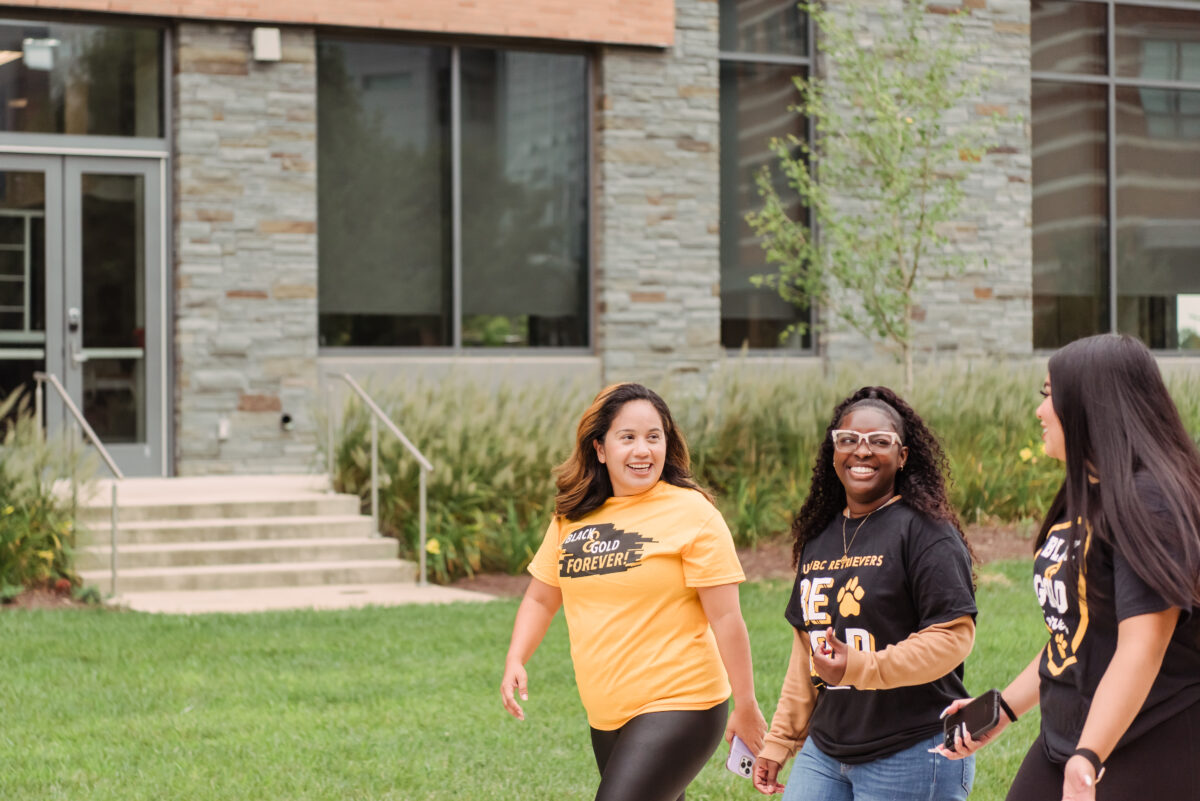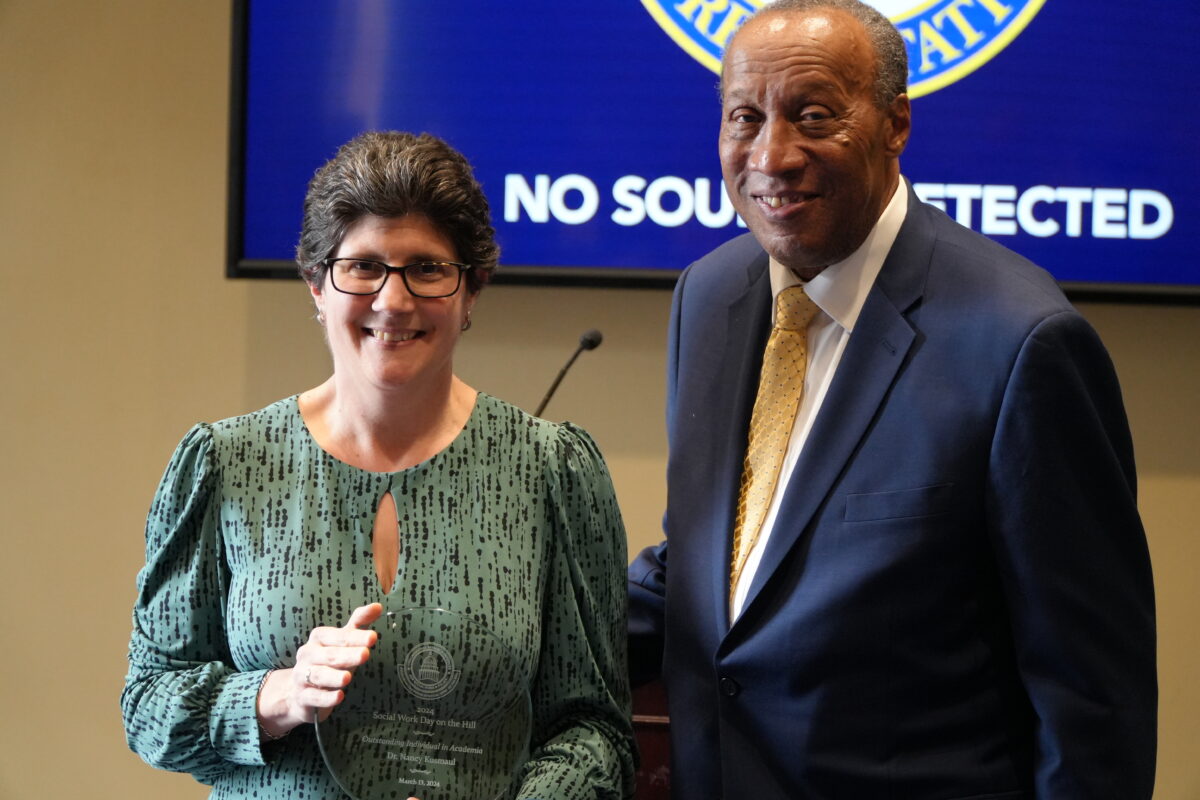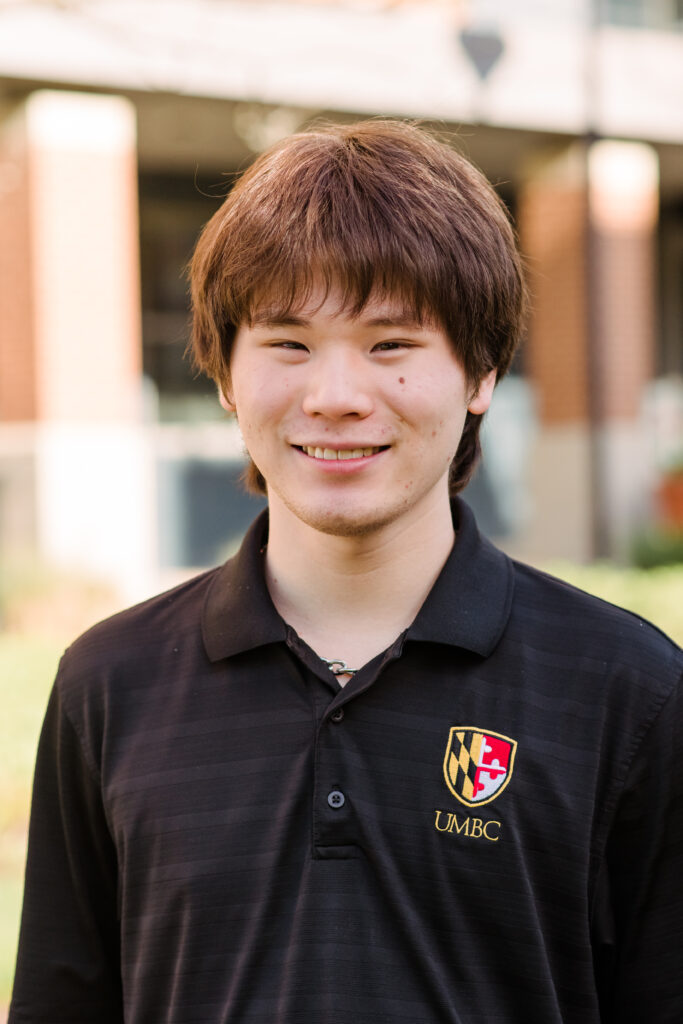Can a Parking Lot be Good for the Chesapeake Bay?
To view scenes from UMBC CUERE’s pervious concrete installation, click the play button below.
9/3/2008
The answer could be yes, if it’s made of pervious concrete, a ‘green’ building material and the subject of a recent how-to workshop hosted by UMBC’s Center for Urban Environmental Research and Education (CUERE).
Pervious concrete allows stormwater to slowly drain through it like a sponge. Traditional concrete causes runoff that erodes waterways and carries pollution into the Chesapeake Bay.
The August 27 event drew 90 public and private sector attendees from all of the Chesapeake Bay Watershed states (New York, Pennsylvania, Maryland, Virginia, the District of Columbia and Delaware) to UMBC. Attendees included state and local regulators and managers for planning, stormwater, environmental protection and highway/transportation departments as well as private sector engineers, architects, developers, builders and concrete suppliers and contractors.
“We were delighted by the overwhelming turnout and interest,” said Stu Schwartz, organizer of the event and a senior research scientist at CUERE with more than 15 years experience in land use and water quality issues. “It was a great success in providing practitioners consistent information on how to use pervious concrete effectively.”
According to Schwartz and his colleague Norb Delatte of Cleveland State University, the workshop also taught attendees how to navigate Maryland’s recent changes in development laws, such as the Maryland Stormwater Act of 2007, which calls for “environmental site design” for new construction and development.
The highlight of the day was the arrival of a concrete mixing truck for a lesson in the proper pouring and installation of the material at two instrumented test plots outside the Technology Research Center building. The test beds are equipped with scientific instruments to give UMBC researchers long-term data on pervious concrete’s effectiveness as a building material and for environmental stewardship. Gwen Stanko, a doctoral student in CUERE’s prestigious IGERT program, and other UMBC students will help monitor the test beds.
The workshop and research effort was funded by the Chesapeake Bay Trust, part of the organization’s new Pioneer Grant Program, which focuses on larger, higher-impact grants to improve the health of the Bay. All labor, equipment and supplies to prepare the sites were donated by Increte of Maryland, and the test beds were installed by Z-Con Inc.
© 2007-08 University of Maryland, Baltimore County 1000 Hilltop Circle, Baltimore, MD 21250 410-455-1000



